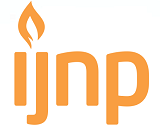Self-Management Levels and Blood Pressure Status in Patients with Hypertension: A Cross Sectional Study
Keywords:
blood pressure status, hypertension, self-management levelsAbstract
Background: Risk factors for hypertension-related complications include smoking, eating an unhealthy diet high in sugar, salt, and fat, consuming fewer vegetables and fruits, being obese, being physically inactive, drinking alcohol, and feeling overwhelmed with self-management responsibilities.
Objective: The study aims to examine the correlation between self-management levels and blood pressure status among hypertensive patients.
Methods: The study employed a cross-sectional study design. The study was conducted in the Purwosari Community Health Center in Surakarta. We used purposive sampling to select study participants from the population. The Hypertension Self-Management Behavior Questionnaire (HSMBQ) and a sphygmomanometer were used to measure self-management levels and blood pressure status.
Results: 100 hypertensive individuals participated in this study. The results show that participants are mostly aged 56 – 60 years old, female (66%), and almost 50% of participants have senior high school education. 51% of participants are categorized as having poor levels of self-management and uncontrolled hypertension. According to the chi-square analysis, there is a statistically significant correlation between self-management levels and blood pressure status (p = 0.001). The correlation between self-management levels and blood pressure status was 0.897, indicating a high degree of correlation.
Conclusions: The study concludes that self-management levels determine the blood pressure status of hypertensive individuals. Community nurses strongly recommend intensive health education among hypertensive individuals.
References
Aljuraiban, G. S., Gibson, R., Chan, D. S., Van Horn, L., & Chan, Q. (2024). The Role of Diet in the Prevention of Hypertension and Management of Blood Pressure: An Umbrella Review of Meta-Analyses of Interventional and Observational Studies. Advances in Nutrition, 15(1). https://doi.org/10.1016/j.advnut.2023.09.011
Aune, D., Huang, W., Nie, J., & Wang, Y. (2021). Hypertension and the Risk of All-Cause and Cause-Specific Mortality: An Outcome-Wide Association Study of 67 Causes of Death in the National Health Interview Survey. BioMed Research International, 2021. https://doi.org/10.1155/2021/9376134
Boulware, L. E., Ephraim, P. L., Hill-Briggs, F., Roter, D. L., Bone, L. R., Wolff, J. L., Lewis-Boyer, L. P., Levine, D. M., Greer, R. C., Crews, D. C., Gudzune, K. A., Albert, M. C., Ramamurthi, H. C., Ameling, J. M., Davenport, C. A., Lee, H. J., Pendergast, J. F., Wang, N. Y., Carson, K. A., … Cooper, L. A. (2020). Hypertension Self-management in Socially Disadvantaged African Americans: the Achieving Blood Pressure Control Together (ACT) Randomized Comparative Effectiveness Trial. Journal of General Internal Medicine, 35(1), 142–152. https://doi.org/10.1007/s11606-019-05396-7
Bumrungsuk, S. (2022). Effects of the self-management training program on self-management behavior and blood pressure levels among elderly people with hypertension. Frontiers of Nursing, 9(1), 71–80. https://doi.org/10.2478/fon-2022-0009
Campbell, N. R. C., Burnens, M. P., Whelton, P. K., Angell, S. Y., Jaffe, M. G., Cohn, J., Brito, A. E., Irazola, V., Brettler, J. W., Roccella, E. J., Figueredo, J. I. M., Rosende, A., & Ordunez, P. (2022). 2021 World Health Organization guideline on pharmacological treatment of hypertension: Policy implications for the Region of the Americas. Revista Panamericana de Salud Publica/Pan American Journal of Public Health, 46, 100219. https://doi.org/10.1016/j.lana.2022.100219
Cao, W., Milks, M. W., Liu, X., Gregory, M. E., Addison, D., Zhang, P., & Li, L. (2022). mHealth Interventions for Self-management of Hypertension: Framework and Systematic Review on Engagement, Interactivity, and Tailoring. JMIR MHealth and UHealth, 10(3), 1–18. https://doi.org/10.2196/29415
Carrillo-Larco, R. M., Guzman-Vilca, W. C., Xu, X., & Bernabe-Ortiz, A. (2023). Mean systolic blood pressure above the control threshold in people with treated uncontrolled hypertension: a pooled, cross-sectional analysis of 55 national health surveys. EClinicalMedicine, 57, 101833. https://doi.org/10.1016/j.eclinm.2023.101833
Cavero-Redondo, I., Saz-Lara, A., Sequí-Dominguez, I., Gómez-Guijarro, M. D., Ruiz-Grao, M. C., Martinez-Vizcaino, V., & Álvarez-Bueno, C. (2021). Comparative effect of eHealth interventions on hypertension management-related outcomes: A network meta-analysis. International Journal of Nursing Studies, 124, 104085. https://doi.org/10.1016/j.ijnurstu.2021.104085
Elliya, R., Baharuddin, S., & Hermawan, D. (2021). Pengaruh terapi musik klasik (mozart) terhadap tekanan darah pada lansia dengan hipertensi. Holistik Jurnal Kesehatan, 15(1), 158–165. https://doi.org/10.33024/hjk.v15i1.1605
Hernawan, T., & Rosyid, F. N. (2017). Pengaruh Senam Hipertensi Lansia terhadap Penurunan Tekanan Darah Lansia dengan Hipertensi di Panti Wreda Darma Bhakti Kelurahan Pajang Surakarta. Jurnal Kesehatan, 10(1), 26. https://doi.org/10.23917/jurkes.v10i1.5489
Isnaini, N., & Lestari, I. G. (2018). Pengaruh Self Management Terhadap Tekanan Darah Lansia Yang Mengalami Hipertensi. Indonesian Journal for Health Sciences, 2(1), 7. https://doi.org/10.24269/ijhs.v2i1.725
Kemenkes. (2018). Laporan Riskesdas 2018 Nasional.pdf. In Lembaga Penerbit Balitbangkes (p. hal 156).
Krismiadi, D., Wihastuti, T. A., & Ismail, D. D. S. L. (2023). Differences Between the Effects of The Benson Relaxation Technique and Deep Breath on Anxiety, Sleep Quality, and Fatigue in Hemodialysis Patients. Jurnal Aisyah : Jurnal Ilmu Kesehatan, 8(2), 101–108. https://doi.org/10.30604/jika.v8i2.1654
Mahmudah, S., Maryusman, T., Arini, firlia ayu, & Malkan, I. (2016). Hubungan Gaya Hidup Dan Pola Makan Dengan Kejadian Hipertensi Pada Lansia Di Kelurahan Sawangan Baru Kota Depok Tahun 2015. Biomedika, 8(2), 39–47. https://journals.ums.ac.id/biomedika/article/view/1899
Maniyara, K., Kodali, P. B., & Thankappan, K. R. (2023). Prevalence, awareness, treatment, control and correlates of prevalence and control of hypertension among older adults in Kerala: A mixed methods study. Indian Heart Journal, 75(3), 185–189. https://doi.org/10.1016/j.ihj.2023.03.004
Moradi, M., Nasiri, M., Jahanshahi, M., & Hajiahmadi, M. (2019). The effects of a self-management program based on the 5 A’s model on self-efficacy among older men with hypertension. Nursing and Midwifery Studies, 8(1), 21–27. https://doi.org/10.4103/nms.nms_97_17
Parati, G., Lombardi, C., Pengo, M., Bilo, G., & Ochoa, J. E. (2021). Current challenges for hypertension management: From better hypertension diagnosis to improved patients’ adherence and blood pressure control. International Journal of Cardiology, 331, 262–269. https://doi.org/10.1016/j.ijcard.2021.01.070
Piri, N., Moradi, Y., Gheshlagh, R. G., Abdullahi, M., Fattahi, E., & Moradpour, F. (2023). Validity of self‐reported hypertension and related factors in the adult population: Preliminary results from the cohort in the west of Iran. The Journal of Clinical Hypertension, 25(2), 146–157. https://doi.org/10.1111/jch.14627
Rismayanti, I. D. A., Sundayana, I. M., Pamela, F. S., Supriati, L., & Wulandari, Y. (2023). Spiritual Emotional Freedom Technique (SEFT) to Reduce Blood Pressure Among Senior Citizent. Jurnal Aisyah : Jurnal Ilmu Kesehatan, 8(2), 305–310. https://doi.org/10.30604/jika.v8i2.1810
Setyaningrum, N., & Suib, S. (2019). Efektifitas slow deep breathing dengan zikir terhadap penurunan tekanan darah pada penderita hipertensi. IJNP (Indonesian Journal of Nursing Practices), 3(1), 35-41. https://journal.umy.ac.id/index.php/ijnp/article/view/5428
Strandberg, S., Backåberg, S., Fagerström, C., & Ekstedt, M. (2023). Self-care management and experiences of using telemonitoring as support when living with hypertension or heart failure: A descriptive qualitative study. International Journal of Nursing Studies Advances, 5(August). https://doi.org/10.1016/j.ijnsa.2023.100149
Sugiharto, S., Natalya, W., & Rejeki, H. (2022). Differences in the Risk of Dementia Level in Home-dwelling Elderly and Nursing Home Residents: A Cross-sectional Study. Malaysian Journal of Medicine and Health Sciences, 18, 4. https://medic.upm.edu.my/upload/dokumen/2023010416535443_2022_0491.pdf
Sugiura, T., Takase, H., Machii, M., Hayashi, K., Nakano, S., Takayama, S., Seo, Y., & Dohi, Y. (2022). Blood pressure variability and the development of hypertensive organ damage in the general population. Journal of Clinical Hypertension, 24(11), 1405–1414. https://doi.org/10.1111/jch.14526
Sun, K., Chen, X. S., Muzhylko, T., & Andrade, F. C. D. (2023). Doctors’ recommendations and healthy lifestyle behaviors among individuals with hypertension in Brazil. Preventive Medicine Reports, 35(July), 102315. https://doi.org/10.1016/j.pmedr.2023.102315
Suwanno, J., Phonphet, C., Thiamwong, L., Mayurapak, C., & Ninla-aesong, P. (2022). Evaluating the Dimensionality and Reliability of the Thai Self-Care of Hypertension Inventory Version 2.0. Asian Nursing Research, 16(4), 197–207. https://doi.org/10.1016/j.anr.2022.08.002
Tan, F. C. J. H., Oka, P., Dambha-Miller, H., & Tan, N. C. (2021). The association between self-efficacy and self-care in essential hypertension: a systematic review. BMC Family Practice, 22(1), 1–12. https://doi.org/10.1186/s12875-021-01391-2
Warburton, D. E. R., & Bredin, S. S. D. (2017). Health benefits of physical activity: a systematic review of current systematic reviews. Current Opinion in Cardiology, 32(5). https://journals.lww.com/co-cardiology/fulltext/2017/09000/health_benefits_of_physical_activity__a_systematic.10.aspx
World Health Organization. (2021). Guideline for the pharmacological treatment of hypertension in adults. Geneva: World Health Organization.
Yan, P., Luo, Y., Zhang, J., Liu, H., Chen, I., Jing Wang, Guofeng, D., & Ge, M. (2022). Effect of administration of low-dose irbesartan and hydrochlorothiazide combined with levamlodipine at different times on the circadian rhythm of blood pressure and the levels of MMPs and TIMPs in non-dipper patients with grade 1 and 2 hypertension. The Journal of Clinical Hypertension Published. https://pubmed.ncbi.nlm.nih.gov/36639984/
Yuniartika, W., Sudaryanto, A., Muhlisin, A., Hudiyawati, D., & Pribadi, D. R. A. (2021). Effects of yoga therapy and walking therapy in reducing blood sugar levels on diabetes mellitus patients in the community. Open Access Macedonian Journal of Medical Sciences, 9, 906–912. https://doi.org/10.3889/oamjms.2021.7104
Published
Issue
Section
License
Copyright (c) 2025 IJNP (Indonesian Journal of Nursing Practices)

This work is licensed under a Creative Commons Attribution 4.0 International License.
License
Articles published in the IJNP (Indonesian Journal of Nursing Practices) are licensed under a Attribution 4.0 International (CC BY 4.0) license. You are free to:
- Share — copy and redistribute the material in any medium or format.
- Adapt — remix, transform, and build upon the material for any purpose, even commercially.
This license is acceptable for Free Cultural Works. The licensor cannot revoke these freedoms as long as you follow the license terms. Under the following terms:
Attribution — You must give appropriate credit, provide a link to the license, and indicate if changes were made. You may do so in any reasonable manner, but not in any way that suggests the licensor endorses you or your use.
- No additional restrictions — You may not apply legal terms or technological measures that legally restrict others from doing anything the license permits.
Copyright
Authors who publish with IJNP (Indonesian Journal of Nursing Practices) agree to the following terms:
- Authors retain copyright and grant IJNP (Indonesian Journal of Nursing Practices) the right of first publication with the work simultaneously licensed under an Attribution 4.0 International (CC BY 4.0) that allows others to remix, adapt and build upon the work with an acknowledgment of the work's authorship and of the initial publication in IJNP (Indonesian Journal of Nursing Practices).
- Authors are permitted to copy and redistribute the journal's published version of the work (e.g., post it to an institutional repository or publish it in a book), with an acknowledgment of its initial publication in IJNP (Indonesian Journal of Nursing Practices).














